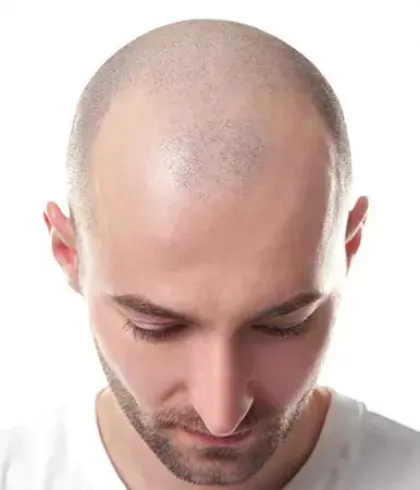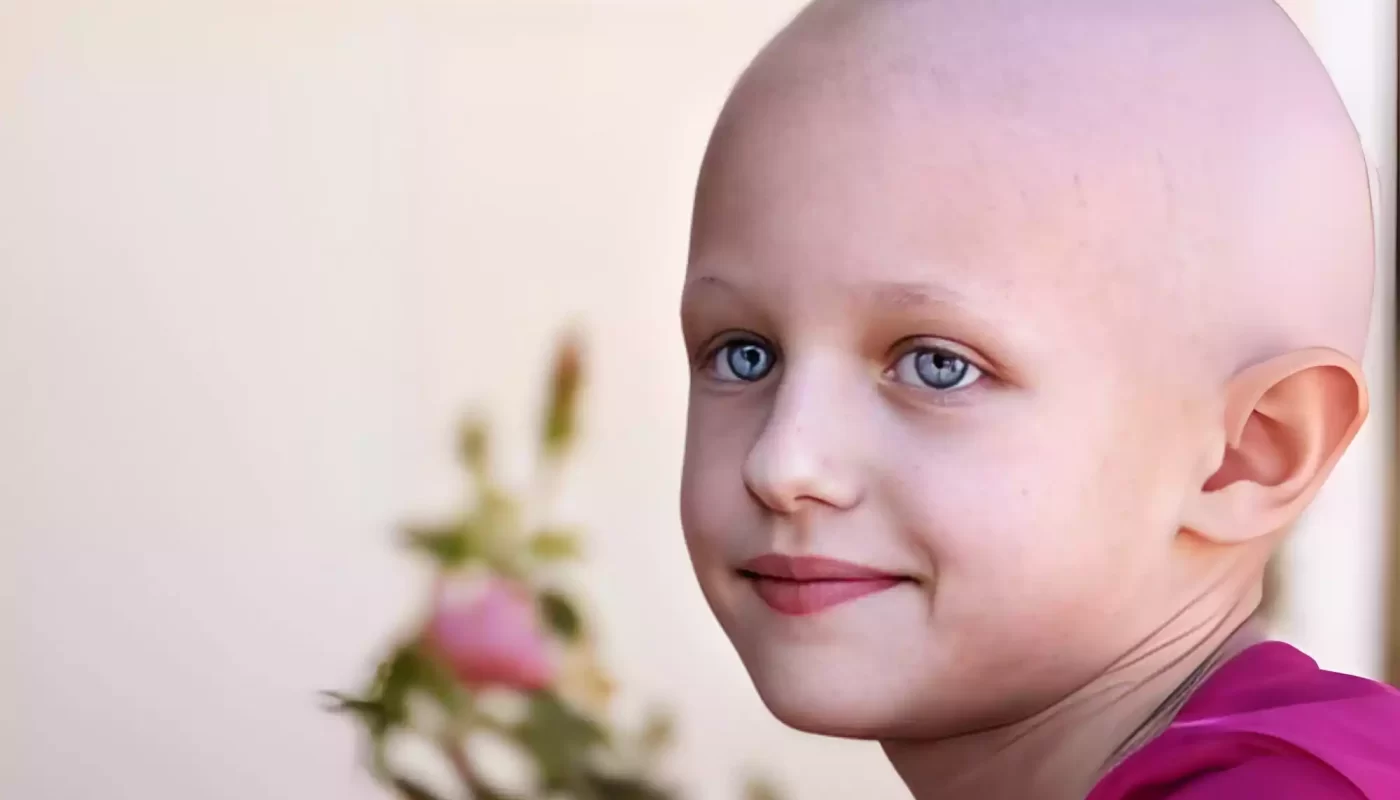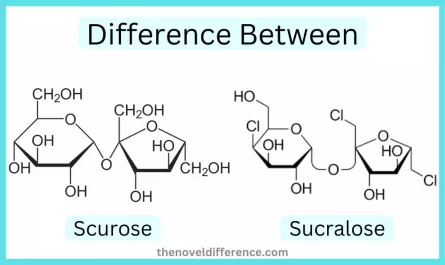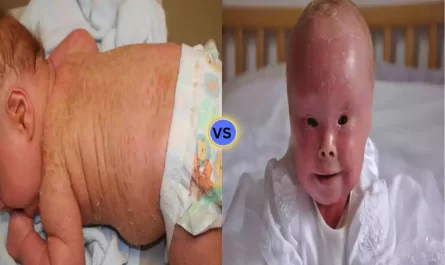Overview of Alopecia Totalis
Alopecia Totalis, a severe and rare form of hair loss, primarily affects scalp hair. It can lead to complete hair loss on the head. This condition is a more severe and advanced form of alopecia areata, a disorder characterized by an autoimmune reaction that attacks hair follicles. Alopecia Totalis is described below, along with its causes, symptoms, diagnosis, treatment, and impact on the individual.
Alopecia Totalis Characteristics:
- Total Scalp Hair Loss: Alopecia Totalis is characterized by the absence of all hair on the head. This includes hair loss on the whole head, from the hairline up to the back neck.
- Eyebrows & Eyelashes: Although the primary symptom is loss of scalp hair in Alopecia Totalis, some people may also lose their eyebrows and eyelashes. This is less common than Alopecia Universalis.
Triggers and Causes:
- Autoimmune factors: Alopecia Totalis may be an autoimmune disease, in which the immune system attacks and targets hair follicles by mistake, causing these to go dormant, and stop hair production.
- Genetics: Evidence suggests a genetic predisposition for autoimmune diseases like Alopecia Totalis. Alopecia and autoimmune diseases are more common in families.
- Environmental factors: Stress, illness, or hormonal changes can exacerbate or trigger the condition in genetically vulnerable individuals.
Diagnosis: Alopecia Totalis is diagnosed by a combination of clinical evaluations and medical tests. These may include
- Clinical Exam: A dermatologist will evaluate the extent of hair thinning on the eyebrows and eyelashes.
- Biopsy: A small biopsy of the skin may be taken to check the hair follicles and look for signs of inflammation.
- Tests of Blood: A blood test may be performed to identify underlying health problems and rule out any other autoimmune disorders.

Treatment options: Although there is no cure for Alopecia Totalis yet, many treatment options can be considered to promote hair growth and manage the condition.
- Topical corticosteroids: Corticosteroid ointments or creams applied to the scalp may help reduce inflammation, and in some cases stimulate hair growth.
- Topical immunotherapy: This involves the application of a chemical irritation to the scalp to trigger an immune response and potentially stimulate hair regrowth.
- Systemic treatments: Oral medication or immunosuppressive medications may be prescribed to modulate your immune system and promote hair growth.
- Wigs & Hairpieces: Many people with Alopecia Totalis choose to wear wigs, scarves, or hairpieces to minimize the impact of hair loss on their appearance.
Outlook and Prognosis: There are different prognoses for people with Alopecia Totalis. Others may only see a partial or complete response to treatment. It is possible for spontaneous regrowth, but it can be unpredictable. Alopecia Totalis can have a significant psychological and emotional impact. Therefore, emotional support and coping techniques are essential to those who suffer from the condition.
Overview of Alopecia Universalis
Alopecia Universalis, a rare and severe hair loss condition, is characterized by complete hairlessness on the scalp, body, and eyebrows. It also affects eyelashes and other body hair. This condition is a severe and advanced subtype of alopecia alopecia, a disorder that leads to hair loss. This article provides an overview of Alopecia Universalis. It includes its causes, symptoms, diagnosis, treatments, and impact on individuals.
Alopecia Universalis Characteristics:
- Total Hair Loss: Alopecia Universalis is characterized by complete and permanent hair loss. This includes all body hair including eyebrows, eyelashes, and facial hair. It also includes armpit, pubic, and armpit hair.
Triggers and Causes:
- Autoimmune factors: Alopecia Universalis may be caused by an autoimmune reaction in which the immune system targets hair follicles and causes them to go dormant, thus preventing hair growth.
- Genetics: Evidence suggests that genetic factors can contribute to an individual’s susceptibility to autoimmune diseases such as Alopecia Universalis.
- Environmental factors: Stress illness or other environmental influences may trigger the condition or worsen it in genetically predisposed people.
Diagnosis: Alopecia Universalis is diagnosed by a combination of clinical evaluations and medical tests.
- Clinical Exam: Dermatologists and healthcare providers evaluate the extent of hairlessness by examining all body parts, including eyebrows, eyelashes, scalp, etc.
- Biopsy: A small biopsy of the skin may be taken to check for signs of inflammation.
- Tests of Blood: A blood test may be performed to identify and rule out any other autoimmune diseases.

Treatment options: Alopecia Universalis can be difficult to treat and there is not a universally effective treatment. Treatment options focus on managing and regrowing hair to the maximum extent possible.
- Topical Immunosuppressants and Systemic Immunosuppressants: Medications that suppress the immune system, such as JAK inhibitors or other immunosuppressive medications, can be prescribed to modulate autoimmune responses and promote hair regrowth.
- Hair transplantation: Although hair transplantation may be used to restore hair in certain areas, its success is limited due to its autoimmune nature.
Outlook and Prognosis: Alopecia Universalis can have a profound effect on one’s physical appearance, causing emotional and psychological distress. Some people will experience a partial regrowth in hair after treatment. Others may only have a limited response or none at all. It is uncommon and unpredictable for spontaneous regrowth to occur. Individuals with Alopecia Universalis need to learn coping strategies and receive emotional support to manage the psychological effects of hair loss.
Alopecia Totalis and Universalis in the comparison chart
Here’s a comparison chart highlighting the key differences between Alopecia Totalis and Alopecia Universalis:
| Characteristic | Alopecia Totalis | Alopecia Universalis |
|---|---|---|
| Affected Areas | Scalp (complete hair loss) | Scalp and entire body (complete hair loss) |
| Eyebrows and Eyelashes | May or may not be affected | Typically affected (complete loss) |
| Causes | Autoimmune, genetics, and environmental factors | Autoimmune, genetics, and environmental factors |
| Diagnosis | Clinical evaluation, biopsy, blood tests | Clinical evaluation, biopsy, blood tests |
| Treatment Options | Topical corticosteroids, topical immunotherapy, systemic treatments, wigs, and hairpieces | Topical and systemic immunosuppressants, JAK inhibitors, limited hair transplantation |
| Prognosis | Variable response to treatment, potential for spontaneous regrowth | Challenging to treat, limited response to treatment, rare spontaneous regrowth |
| Impact on Appearance | Significant but can be managed with wigs or other coverings | Profound impact due to complete hair loss on the body, challenging to conceal |
| Psychological Impact | Varies but may be less severe due to partial hair coverage | Severe due to the extensive and complete hair loss, significant psychological and emotional impact |
| Support and Coping | Support groups, counseling, wigs, lifestyle adjustments | Support groups, counseling, coping strategies, wigs, and other coverings |
It’s important to note that both conditions are rare and challenging to manage, and individuals affected by either Alopecia Totalis or Alopecia Universalis often require emotional and psychological support in addition to medical treatment. Treatment outcomes can vary widely from person to person, and there is no one-size-fits-all solution for these conditions.
Importance of distinguishing between the two conditions
It is important to distinguish between Alopecia Totalis (also known as Alopecia Universalis) and Alopecia Totalis for several reasons:
- Treatment selection: Treatment options and strategies may differ significantly for the two conditions. It is important for healthcare providers that they understand the diagnosis in order to prescribe the best treatment. Alopecia Totalis has more treatment options and may offer a greater chance of hair growth than Alopecia Universalis.
- Prognosis & Expectations: Patients, as well as their healthcare providers, need to set realistic expectations about the possibility of hair regrowth. It is important to know if a patient has Alopecia Totalis (or Universalis) to set realistic expectations for their treatment.
- Psychological impact: Hair loss has a different psychological and emotional effect depending on the condition. Alopecia Universalis with its complete loss of body hair can have a greater impact on body image and self-esteem than Alopecia Totalis. This difference will help healthcare providers to provide the right support and counseling.
- Research and Clinical Trials: Researchers and doctors need to distinguish between these conditions when studying and developing treatment for alopecia. Accurate diagnosis is important for clinical trials, as research efforts are often focused on subtypes.
- Healthcare and Insurance Coverage: The precise diagnosis can influence the insurance coverage and access to certain treatments. A clear diagnosis can simplify the process of obtaining insurance coverage for expensive treatments.
- Patient Education and Support: An accurate diagnosis allows for tailored education and support. Support groups and resources provide specific information and guidance for each subtype of Alopecia. This helps patients manage and overcome the challenges associated with their condition.
It is important to distinguish between Alopecia Totalis (or Alopecia Universalis) and Alopecia Totalis (or Alopecia Totalis), in order to provide the best care, set realistic expectations, address the unique psychological impact of these conditions, advance research and treatment, and ensure access for those affected. This allows for a more effective and personalized approach to managing these challenging auto-immune disorders.
Coping Strategies and Support
It can be difficult to cope with the emotional impact of Alopecia Totalis or Alopecia Universalis.
Here are some coping techniques and support types that can be helpful to those affected by Alopecia Totalis or Alopecia Universalis:
1. Support Groups:
- Joining local support groups or online forums that focus on alopecia provides a sense of belonging, a safe place to discuss emotions and share coping techniques, as well as experiences.
- It can be helpful to hear from others going through the same challenges. They may also offer advice and reduce feelings of loneliness.
2. Counseling and Therapy:
- A psychologist or counselor who offers individual therapy can offer a supportive and confidential environment in which to explore and develop coping mechanisms and the emotional impact of hair thinning.
- Cognitive-behavioral (CBT), can help people manage anxiety and depression that are associated with alopecia.
3. Education:
- By educating themselves about their condition, its causes, and the available treatments, individuals can make more informed healthcare decisions.
- Fear and anxiety can be reduced by gaining knowledge.
4. Lifestyle Changes:
- You can boost your confidence by experimenting with accessories such as scarves, hats and makeup.
- It can be useful to learn makeup techniques for drawing on eyebrows and enhancing facial features.
5. Build Self-Confidence:
- Self-acceptance and building self-esteem are essential. Focus on strengths and personal attributes, not just physical appearance.
- Self-esteem can be boosted by engaging in hobbies or activities that you enjoy and find fulfilling.
6. Supportive Relationships:
- Communication with friends and family about your needs and feelings can help to foster emotional support and understanding.
- It can be beneficial to surround yourself with people that are accepting and empathetic.
7. Advocacy and awareness:
- Participating in awareness and advocacy efforts about alopecia will help to reduce stigma and increase public understanding.
- Share your story with others and educate them. This can empower you and help others who are facing similar challenges.
8. Online Communities:
- Online forums, social media groups, and websites dedicated exclusively to alopecia provide a community for people with alopecia and an opportunity to share their experiences and receive advice.
9. Professional Support:
- Consult dermatologists and healthcare providers who have experience in treating alopecia. They can provide the latest medical insight and treatment options.
10. Stress Management:
- Stress and anxiety related to alopecia can be managed by practicing stress-reduction methods such as meditation, mindfulness, yoga or exercise.
11. Wigs and hairpieces:
- Explore wigs and hairpieces to help you feel more confident and normal about your appearance.
12. Embracing Individuality:
- Keep in mind that your identity does not only depend on your appearance. Focus on your inner beauty and growth and embrace your unique qualities.
The best way to cope with alopecia varies from person to person. It is important to get support and use coping techniques that are tailored to your needs and preferences. Peer support and professional guidance can be valuable resources for navigating the emotional challenges of hair loss.
Conclusion
Alopecia Totalis or Alopecia Universalis can be challenging conditions with a major impact on physical appearance as well as emotional well-being. It is important to distinguish between these conditions to provide tailored support, set realistic expectations, and receive personalized treatment.
Support groups, education, self-acceptance, and coping strategies are all important in helping people with these conditions live fulfilling lives.




